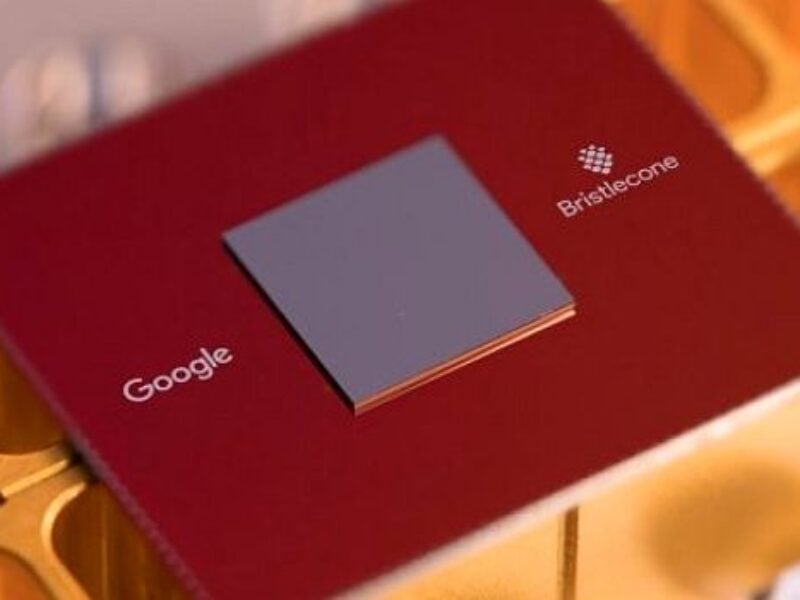
Google aims to dominate with latest quantum processor
Called “Bristlecone,” the new gate-based superconducting system is designed to provide a testbed for research into system error rates and scalability of the company’s qubit technology, as well as applications in quantum simulation, optimization, and machine learning. The ultimate goal, say Google researchers, is to build a quantum computer that can be used to solve real-world problems.
“Our strategy is to explore near-term applications using systems that are forward compatible to a large-scale universal error-corrected quantum computer,” says Julian Kelly, Research Scientist, Quantum AI Lab. “In order for a quantum processor to be able to run algorithms beyond the scope of classical simulations, it requires not only a large number of qubits. Crucially, the processor must also have low error rates on readout and logical operations, such as single and two-qubit gates.”
The device is based on the underlying physics of the company’s previous 9-qubit linear array technology and uses the same scheme for coupling, control, and readout, but is scaled to a square array of 72 qubits. The researchers are looking to achieve similar performance to the best error rates of the 9-qubit device – which demonstrated low error rates for readout (1%), single-qubit gates (0.1%), and two-qubit gates (0.6%) as a best result – but across all 72 qubits of Bristlecone.
“We chose a device of this size to be able to demonstrate quantum supremacy in the future, investigate first- and second-order error-correction using the surface code, and to facilitate quantum algorithm development on actual hardware,” says Kelly.
In order to be able to quantify the quantum processor’s capabilities. the researchers developed a benchmarking tool that allows them to assign a single system error by applying random quantum circuits – which must be large in both number of qubits as well as computational length (depth) – to the device and checking the sampled output distribution against a classical simulation. If a quantum processor can be operated with low enough error, say the researchers, it would be able to outperform a classical supercomputer on a well-defined computer science problem – an achievement known as “quantum supremacy.”
“Although no one has achieved this goal yet, we calculate quantum supremacy can be comfortably demonstrated with 49 qubits, a circuit depth exceeding 40, and a two-qubit error below 0.5%,” says Kelly. “We believe the experimental demonstration of a quantum processor outperforming a supercomputer would be a watershed moment for our field, and remains one of our key objectives.”
If achieved, say the researchers, Bristlecone would then be a compelling proof-of-principle for building larger-scale quantum computers. However, they add, operating a device such as Bristlecone at low system error requires harmony between a full stack of technology ranging from software and control electronics to the processor itself – a feat that requires careful systems engineering over several iterations.
“We are cautiously optimistic that quantum supremacy can be achieved with Bristlecone, and feel that learning to build and operate devices at this level of performance is an exciting challenge!,” says Kelly. “We look forward to sharing the results and allowing collaborators to run experiments in the future.”
 If you enjoyed this article, you will like the following ones: don't miss them by subscribing to :
eeNews on Google News
If you enjoyed this article, you will like the following ones: don't miss them by subscribing to :
eeNews on Google News




